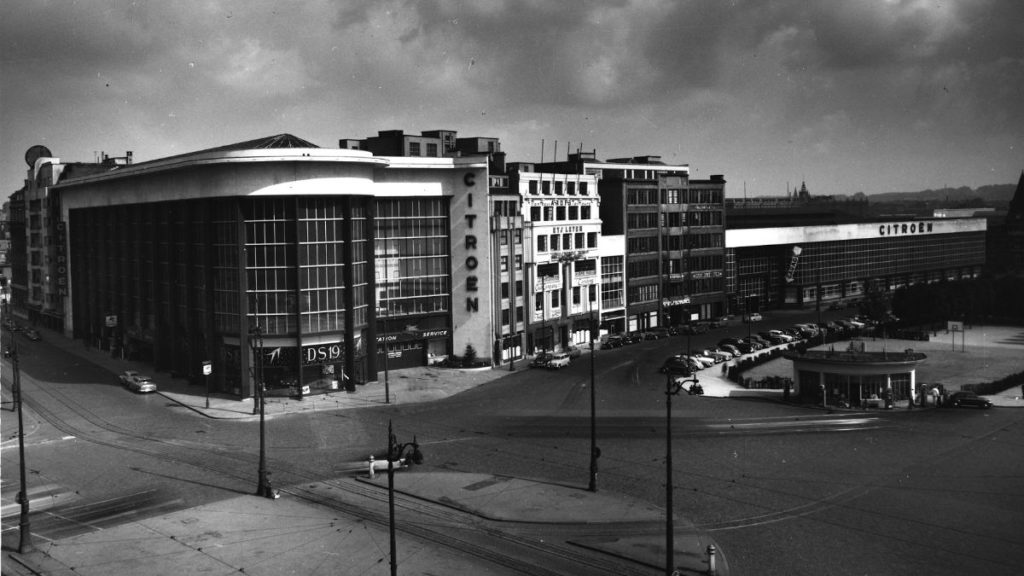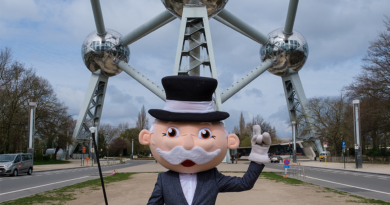The Summer Exhibition at AutoWorld: CITROËN 100 YEARS
The French automotive icon!
Citroën is celebrating its 100th anniversary and Autoworld’s major summer exhibition is dedicated to the make with more than fifty models which, all in their way, left their mark on the history of the make bearing the double chevron.
Renowned for its 2CV – but also its legendary “Traction Avant”, its DS, ID — not forgetting the numerous innovations brought about by its founder, André Citroën, such as the famous hydropneumatics suspension on the four wheels, not to mention the revolutionary and audacious lines for those days, the make now celebrating its centenary is undoubtedly one of the most mythical of French car makes.
The exhibition organised in collaboration with Citroën Belux and the Belgian Clubs Citroën, as also with the Conservatoire Citroën (loaning us several gorgeous competition version models) will offer up a wide historical fresco taking in the most emblematic Citroën cars as also several spectacular vehicles.
From the Type A through to the C3 Pluriel, by way of the ‘sweet’ Rosalie, two plateaux will display the historic evolution of the make. The Traction has its very own plateau with no less than six different models.
No doubt the not so young among us will recall the radical change brought about when the twin-cylinder Dyane, Ami6 and Méhari appeared on the market… they will all be present, and many others also, fitted with special coachwork, LCV vans and a Kegresse, one of the first halftracks.
The competition and rally cars will be well represented by, among others, the Xsara WRC and the C4 WRC of Sébastien Loeb, 9 times WRC World Champion with Citroën, not forgetting the AX Superproduction…
Numerous other models are to be admired from 27th June through to the 3rdSeptember at the Autoworld museum, as also the range presently available with, among others, the “Origins” the collector edition, specially designed to celebrate the make’s centenary. C1, C3, SUV C3 Aircross and C4 Cactus will each have this elegant collection version.
On the exhibition’s periphery: 10 showcases and tables will display scale models. Historical videos will be projected in the museum’s media-room and children’s entertainment is also foreseen.
The start of the story in a nutshell.
DOUBLE CHEVRONS
André Gustave Citroen is born in Paris on 5th February 1878. He is the son of a Dutch father and a Polish mother. During his youth, and while studying at the polytechnic, he travels to his mother’s homeland and comes across something that would change his life: chevron gears which can transfer more power with less strength, and far more silently. He acquires this invention and, once back in Paris, improves it and has it patented, as also other iron and steel applications.
VISION
Recommended by his brother, André Citroën – in the meantime his name is now written with the diaeresis on the “e” for a more French pronunciation – is appointed to the management of the Mors car factory in 1908, not only to increase quality, but especially for his remarkable ideas in the fields of advertising and marketing. In less than ten years he multiplies the turnover by a factor of ten! After the war he acquires the Mors factories which will exist up until 1925, after which the buildings of the 15th district in Paris are converted into the laboratories of the Citroën Design Offices.
At the start of the First World War in 1914, he soon discovers that the French Army has a shortage of ammunition. He prepares a business plan to produce shells on a big scale, and he makes a fortune. He manages to convince the general staff of his ideas and in 1915 he converts allotments at the Quai de Javel, in the south-west of Paris, into a war factory. Without exception all his workers are women, seeing the men have gone off to war. Citroën realises that he needs to adapt and provides them with crèches and grocery shops, highly unconventional in those days.
POPULAR CAR
The visionary André Citroën does not believe that the Great War will last long. He plans his future: the mass-production of cars for the general public. He wants to take advantage of his experience of mass production of shells and decides to produce a vehicle for the general public. In 1917, following his trip to the United States, and more specifically to the Ford factory, where he discovers mass production; he purchases several cars and has these dismantled by his engineers. Jules Salomon, designer of French cars sold under the make of Le Zèbre, designs the first Citroën 10HP. The prototype is presented at the end of 1917 to the general staff in the Roanne barracks. But it would take another twelve months before peace is declared in western Europe. As from that moment Citroën can truly start to create his own car make.
11th November 1918, end of the war: Citroën’s project materialises. Some ten days later the 10HP Citroën is presented at the Service des Mines in France, with a view to obtaining the authorisation to drive the car on French soil. Following various modifications, the service grants permission. It would take a further six months before the first models are delivered to impatient clients. Brilliant communicator, André Citroën promoted his make with audacity and ingenuity. Citroën very quickly becomes the top car manufacturer in France, even in Europe.
The first Citroën Type A, in 4-seater model under a soft hood, was a type of French Ford T version. They were only available in Artillery Grey – it seems that André Citroën was able to acquire a limited quantity of paint from the army.
To recognise one of the very first Citroën models one merely needs to look at the headlights. There is no bar between these. It would appear as from 1920.
Showing no interest for company policy, the business soon experiences financial difficulties, which brings the expensive development of the “Traction” into jeopardy. On the verge of insolvency in 1934 André allows Michelin to take over control of his company and he dies in 1935. He would therefore never see the success of the “Tractions” in its 7-11-15 versions. After the war the incredible 2CV, the Type H van and the fascinating ID/DS ensure that Citroën would belong to the legendary makes out of automotive history.
And in Belgium
In Belgium, Hector Evrard is appointed as the representative. He lives 19, Rue du Gouvernement Provisoire in Brussels – an imposing town house nothing like that of a car garage. Hector Evrard would immediately be contacted by Marc Devergnies from Binche, who wants to become a Citroën concessionaire. On 6th May 1919, the first payment is made to Evrard, who passes it on to the company in Paris. The present Citroën concessionaire of La Louvière still carries the same name and is most probably to oldest Citroën garage in the world.
In 1924 Citroën’s first foreign branch is established in Belgium, rue de l’Amazone, and two years later a showroom opens its doors on the Boulevard Adolphe-Max. In the ’30s, the iconic building located Place de l’Yser opens its doors and would remain the headquarters of Citroën Belux up until 2012.
PRACTICAL INFO:
Autoworld Museum Brussels
Parc du Cinquantenaire/Jubelpark 11, 1000 Brussels
Metro Merode
Opening Hours :
Open daily 7/7 from 10am until 6pm
Entrance fee to the museum :
Adults : 12 €
Seniors : 10 €
Students : 9 €
Children 6-12 years : 5 €






